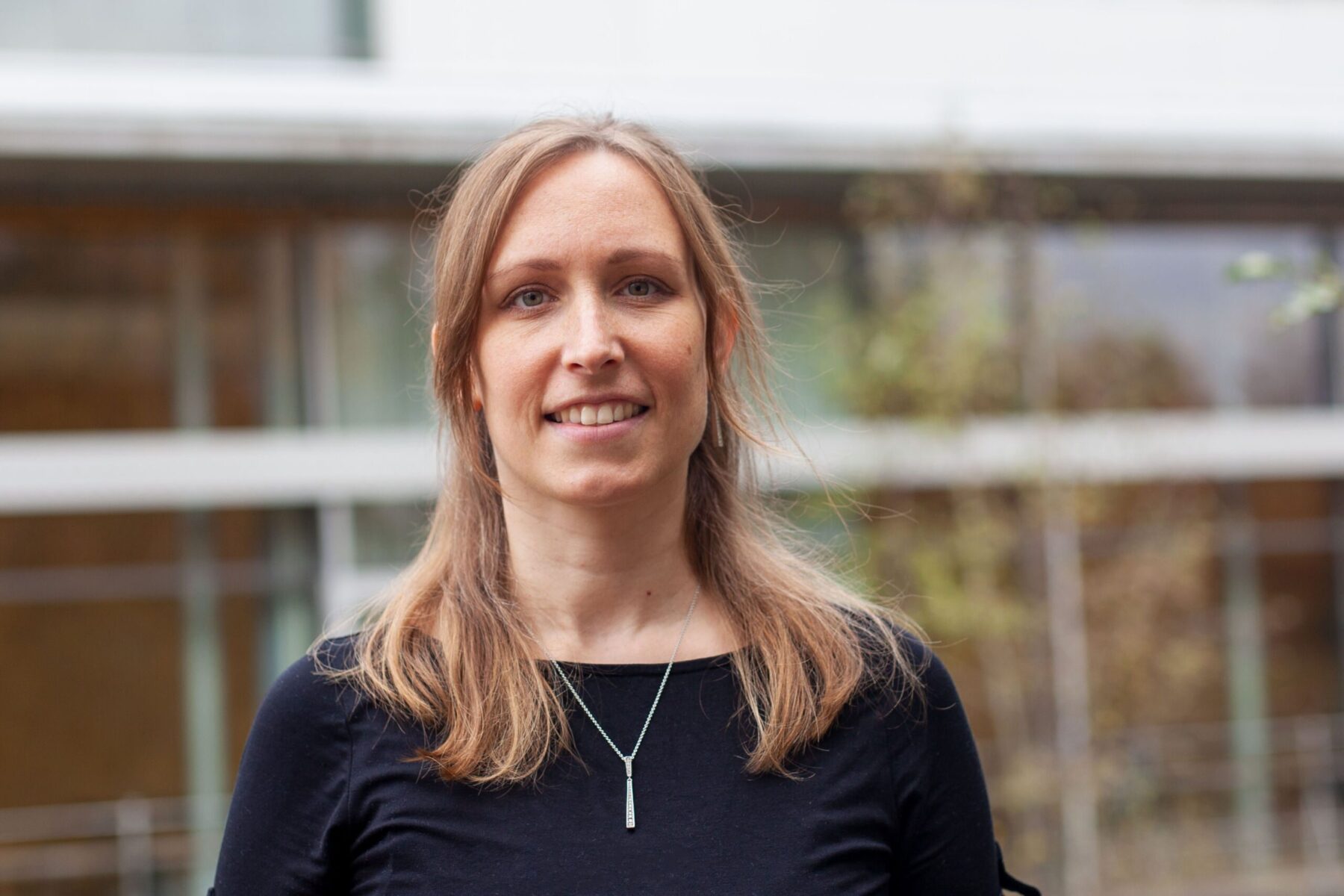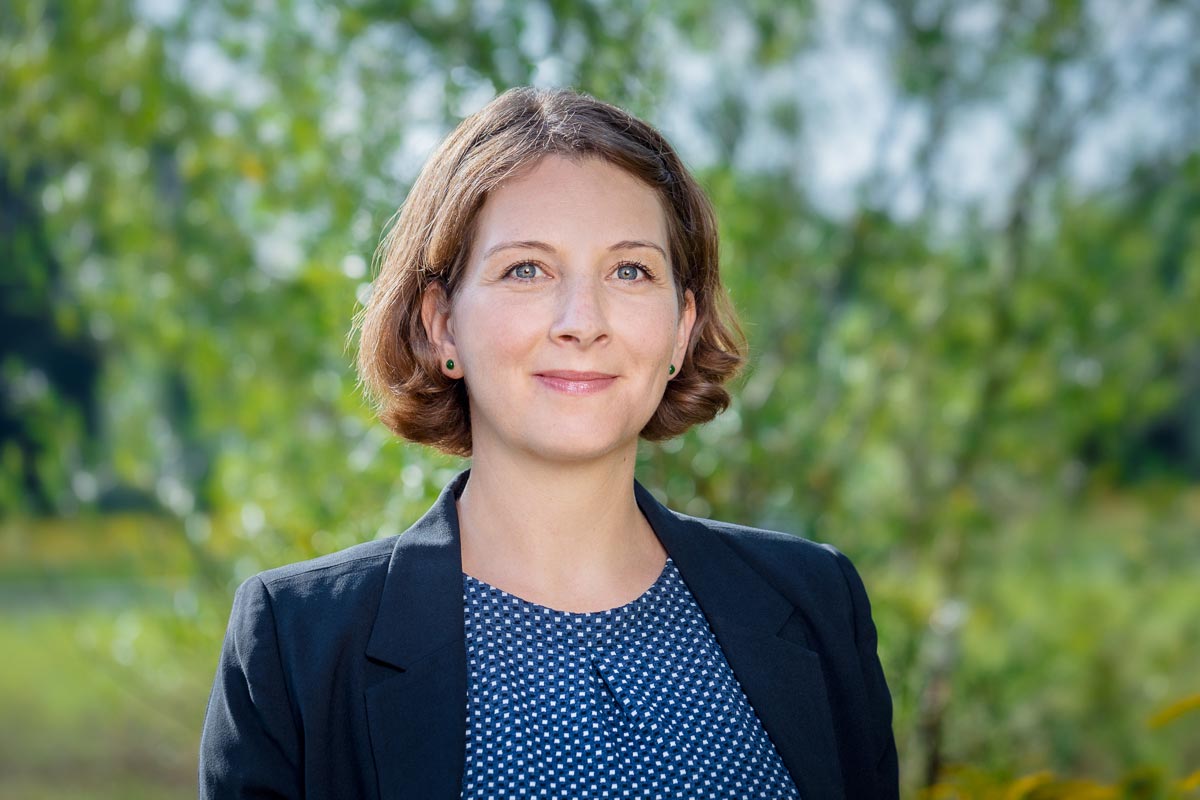
Revolution from the Lab – Coatings from potato-, corn- and pea starch
Coatings protect materials from negative environmental influences. They prevent metals from rusting and wood from swelling. However, over 90 percent of coatings today are still based on synthetic petroleum products. That has negative consequences for the environment. Therefore, Dr. Christina Gabriel-Liebs has long been researching the possibilities of producing coatings from a sustainable raw material: starch. A true pioneer in this field, her products are highly promising and could revolutionise the coatings sector; making it more sustainable in the process.
In Germany alone, over 1.5 million tonnes of coating materials are produced annually. The majority of these are synthetically produced from petroleum products. That has some drawbacks, for, as with other synthetic items, microplastic can be generated by petroleum-oil-based coatings. Moreover, petroleum is a limited resource, and so its costs are increasing around the world. At the same time, politicians are implementing ever-stricter laws in order to improve the ecological balance between products and processes. This will gradually make more sustainable production processes and source materials more important and attractive for the industry. This is where the research of Christina Gabriel-Liebs of the Fraunhofer Institute for Applied Polymer Research (IAP) comes in.
The pressure on researchers to develop products that make our world more sustainable
Since 2013, the chemist Christina Gabriel-Liebs has been working with starches and their modification for technical applications. Originally, she had started her Master’s thesis at the Fraunhofer Institute for Applied Polymer Research (IAP). Since then, the native of Northern Hessen has seen one success after success. Simply put, her PhD dissertation for the Fraunhofer IAP dealt with the possibilities of producing water-resistant binding agents for coatings. Since little research had been done in this area, she was able to produce completely new products. Gabriel-Liebs has a clear answer to the question of what drives her: “I want to research possibilities for living a sustainable life”.
One starch is not like another – the search for suitable source products
Since completing her PhD, Gabriel-Liebs has optimised the product properties so as to produce coatings from starch as a raw material. The results were so promising that she registered a patent for an individual series of starch ester coatings. “We were all surprised with the possibilities of starch in this area”, explains the scientist. As starch is extracted from natural products like potatoes, peas or corn, it can be considered to come from sustainable raw materials. However, one starch is not just like another. The properties vary according to the plant it is extracted from. This influences the final properties of the coating.
Stir, heat, esterify, clean: how starch is modified
The raw (unprocessed) starch, however, does not yet possess the optimal properties for use as a water-resistant coating. Gabriel-Liebs comments: “A common property for organically-based raw materials is that they swell up when in contact with water.” The coating would then lose its adhesion to the surface and come off. The starch must therefore be modified so that this is prevented. Then the coating is, for example, heated to 90 – 95 degrees in flasks while being stirred at 200 – 300 rotations per minute. Gabriel-Liebs then employs, among other methods, esterification with fatty acids. In this process, a so-called ester is formed through the reaction of the fatty acid with the starch. The resulting starch ester must then be cleaned in an alcohol/water mixture. After this, the modified starch is ready.
Promising results
In the next step, the modified starch is transferred to the Fraunhofer Institute for Applied Polymer Research (IAP). There, colleagues conduct stability tests. These include exposing the coated materials to fluctuating temperatures of -10°C to 40°C – after all, a wooden table coating, for example, has to withstand such temperatures in Germany. The colleagues also investigate the behaviour of the coating in water. It the tests are successful, the samples are sent to manufacturers. Gabriel-Liebs is very satisfied with the initial results: “The tests so far have shown that the starch has very good water resistance as a result of the modification.” The scientist adds “In addition, we could demonstrate very good adhesion on various surfaces like metal, glass and individual plastics and woods”.
The fact that a binding material works on such a range of substrates without any additive is very unusual, according to Gabriel-Liebs: “There is good reason for the existence of so many different binding agents for various surfaces and applications”, she explains. “After all, a coating for parquet flooring has different requirements from a shelf in your living room.”
Career and development possibilities at Fraunhofer IAP in Potsdam Science Park
Currently, two projects related to this topic are underway simultaneously at the Fraunhofer IAP. One relates to sustainable wood protection coatings based on starch esters, while the other is concerned with CO2-modified starch for organically-based water-resistant coatings. The first project will be completed at the end of 2022. By then, Gabriel-Liebs will have collected more findings about starch, bringing her closer to her goal of developing a sustainable solution for coatings. With the Fraunhofer IAP, she is happy to have found a research institute that supports her in her projects. The decision to move to Potsdam was the right one, in her opinion. Sometimes, she is still amazed at how the Potsdam Science Park has developed since she worked on her Master’s thesis. “There’s been incredible change. Many new buildings have appeared. In the meantime, there is a much livelier atmosphere on campus than in 2013, when I began to work here”, Gabriel-Liebs says.
She sees the location – somewhat outside the centre of Potsdam – as an advantage. “Nature can be very inspiring. It’s possible here to look outside for a moment, switch off and recharge your batteries”, she explains. She hopes that there will be more networking between the various research institutes and companies on the site in future. “We have so much knowledge and potential for innovation right in front of us. If we exchange more information, we can learn a lot from each other and reap the benefits”.
This blog and the projects of Standortmanagement Golm GmbH in the Potsdam Science Park are funded by the European Regional Development Fund (ERDF) and the state of Brandenburg.
Image credits: Dr. Christina Gabriel-Liebs © Julia Hinz
Contact

Julia Hinz
Site marketing
julia.hinz@potsdam-sciencepark.de + 49 331 237 351 109